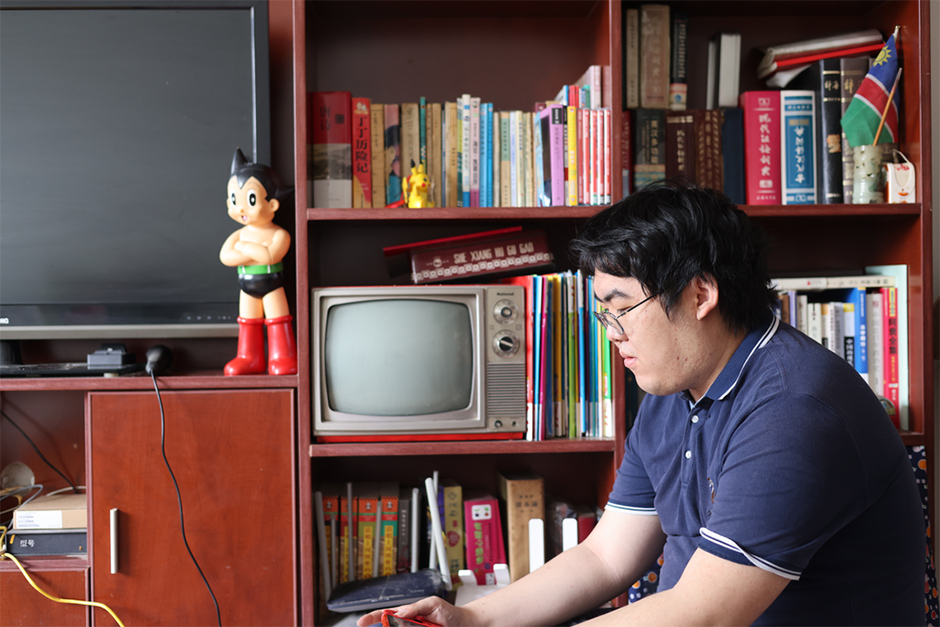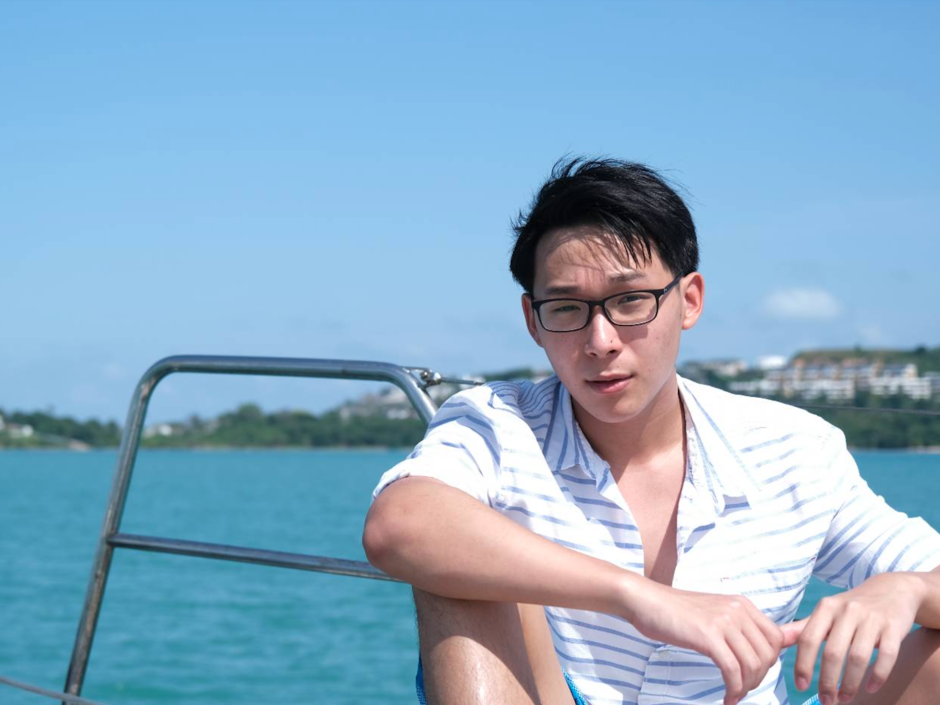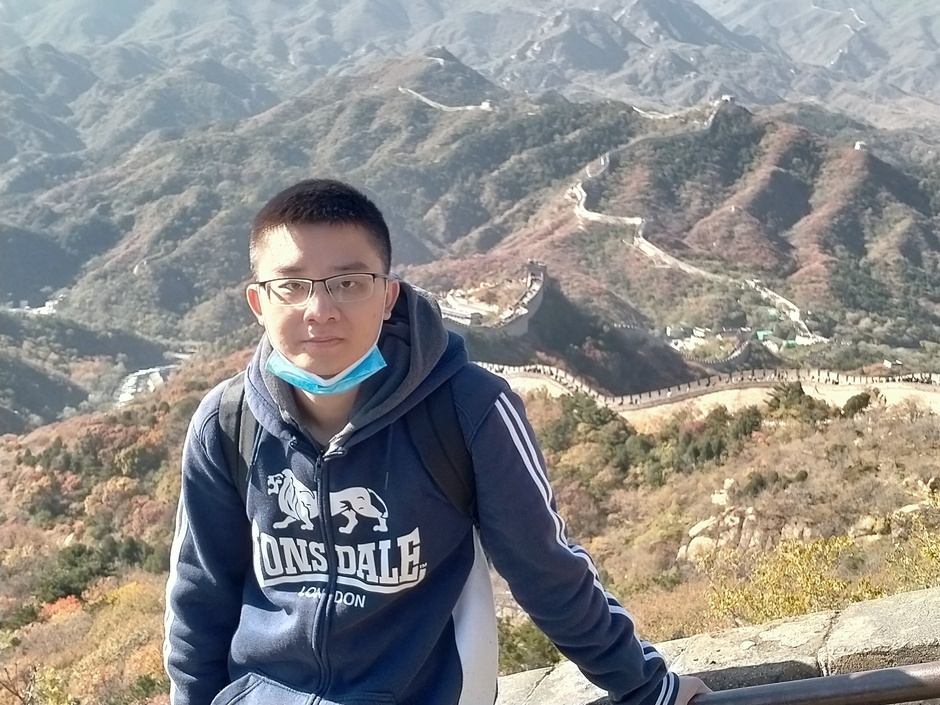Shuangyuan Cao, a Year Four student in BA Digital Media Arts, will begin a new life chapter later this year, when he will start his MPhil Digital Humanities at the University of Cambridge – the first student at the School of Film and TV Arts (SoFTA) who has made it to the prestigious institution.
Study what you love
Cao has always been a massive fan of games and comics. “When I was in elementary school, I taught myself to design a video game – Super Mario Doujin (a Japanese word meaning fan-made creations). From middle school, I started watching tutorials and creating my own comics. I love expressing myself and telling stories via games and comics.”
 Super Mario Doujin designed by Shuangyuan Cao inelementary school
Super Mario Doujin designed by Shuangyuan Cao inelementary school
Driven by his strong interest, Cao decided to study BA Digital Media Arts at Xi’an Jiaotong-Liverpool University.
“When I first arrived at XJTLU, I was so impressed by the architecture, the academic atmosphere, and the inclusiveness. Everything here brims with vitality, which made me look forward to the future, and made me want to achieve something.
“The programme is a perfect fit for me because it combines art and technology. I needed technical skills to complement my artwork. But I didn’t expect that the courses will guide me toward a new direction – research.”
Art as research
Before studying at XJTLU, Cao thought of art and research as completely separate fields, but in Year Two, the module Introduction to Digital Media Arts changed his perspective.
“In one assignment, we were asked to analyse a digital media production using art-based methodologies, and to deconstruct the work from three dimensions – theme, content, and form. I chose the game Super Mario Galaxy, which I like playing very much.”
At first glance, the game doesn’t have any theme, apart from Mario travelling through and exploring different galaxies. But Cao found an allegory after analysing the setting and the plot.
“In this game, players need to collect Power Stars for tiny star-shaped creatures by completing missions or defeating enemies. Upon collecting enough Power Stars, the creature becomes a celestial body, and flies to the centre of the universe. In other words, they die. However, dying stars are later reborn as new stars.
“This reveals that every star in the universe will eventually cease. With the life and death of stars, a new galaxy will emerge.”
It was his first time to view a game from a researcher’s perspective, and he found that art and research are closely related.
“It was such an interesting experience, and I discovered so many things unexpectedly. I realised that although games are designed to entertain people, game designs are based on rigorous testing, technical skills, and systematic review.
“Before, I thought games weren’t meant for research, and research wasn’t meant for me. I thought research and methodology only apply to scientific disciplines. Now I know that art and research are not separate. A creative artist can also be a curious researcher,” he says.
Research as art
Although Cao enjoyed carrying out research, he wasn’t sure about pursuing a career in academia, until Year Three when he and his classmates worked on an immersive projection mapping.
“Our project was called Between the Mountains, and it was inspired by the movie Princess Mononoke. We explored the harmony between nature and human beings through projections, animations, and games.
“Later, our supervisor Fang Liu asked if we’d like to go one step further. If yes, she suggested we either improve the project aesthetically and technologically, or write an academic paper based on the project.”
 Between the Mountains by Shuangyuan Cao and his team
Between the Mountains by Shuangyuan Cao and his team
As the group leader, Cao chose the latter. Under the guidance of Liu, he completed a paper, analysed the user tutorial of the interactive design, and published it at the International Conference on Human-Computer Interaction 2021.
“This was my first time writing and publishing an academic paper. During the process, I found the virtuous circle in research, and it gave me a great sense of fulfilment. By learning from the theories others have developed, I enrich my knowledge and systemise my approach. By publishing the paper, I share my ideas with others and contribute to the field.
“I also realised what my true passion is. I’ve always wanted to convey my ideas, whether through games, comics, or storytelling. I love expressing myself in a creative and convincing way, and essay writing satisfies this purpose,” he says.
“These experiences helped me make up my mind. I decided to become a researcher. And I said to myself: ‘If I dare to dream, I may as well dream big.’”
Dreams come true
After searching online, Cao discovered the MPhil Digital Humanities programme at the University of Cambridge.
“I was drawn to the programme because it not only focuses on humanities and social sciences through digital means, but also emphasises programming and other practical skills.
“Applying for Cambridge is something that I felt had little chance of success, but I’d regret if I didn’t do. And I’m so glad that I went for it. Getting the offer feels incredible. It’s like winning the lottery.”
 Shuangyuan Cao
Shuangyuan Cao
Cao says learning at XJTLU helped to turn his hobby into a career. “I’m still passionate about games and comics. But If I hadn’t come to XJTLU, I probably wouldn’t be interested in art-based research. Now they are not merely hobbies, but my research interests and my way of communicating with the world.
“If I could time travel, I’d like to go back and tell my childhood self – never give up on your passions, despite all the challenges. Great things take time.”
By Xinmin Han
Edited by Patricia Pieterse
Photos courtesy of Shuangyuan Cao




